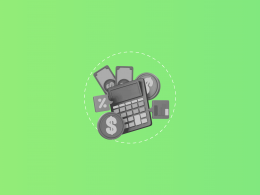Understanding the ins and outs of tax reporting is crucial to managing a business, and IRS Schedule C plays a key role for sole proprietors and single-member LLCs. IRS Schedule C is a tool that allows self-employed individuals to paint a full financial picture of their business activities, helping tax authorities assess income, expenses, and overall profitability.
We’ll explore the peculiarities of Schedule C, commonly known as the Profit or Loss from Business form. We’ve covered everything from its purpose and the types of businesses that file it to understanding its structure, obtaining the form, and key tips for effective reporting.
If you’re an experienced entrepreneur or are stepping into the business arena for the first time, this guide aims to clarify Schedule C and provide valuable insights to help you navigate the tax landscape effectively. Let’s delve into the details of Schedule C and ensure you’re well-equipped for a seamless tax season.
Disclaimer: This guide is provided for informational purposes only and is not intended to substitute professional advice. Accounting, tax, and financial matters can be complex, and the information presented here may not cover all possible scenarios or considerations specific to your situation. It is crucial to consult with a qualified professional accountant or tax advisor to address your individual needs and ensure compliance with applicable laws and regulations.
What is Schedule C?
Schedule C is also known as the Profit or Loss from Business form. It’s an Internal Revenue Service (IRS) tax form and a crucial document used by sole proprietors and single-member LLCs to report their business income and deductible expenses for federal income tax purposes.
This form is an integral part of the individual tax return (Form 1040) and is designed to capture the financial details of a small business operated by a single individual.
On Schedule C, taxpayers outline their business revenue, subtract allowable expenses, and calculate the resulting profit or loss.
The form covers various types of businesses, ranging from freelancers and consultants to small retail operations.
Accuracy and completeness in completing Schedule C are vital for determining the taxable income of the business owner and ensuring compliance with IRS regulations.
Purpose of Schedule C
The primary purpose of IRS Schedule C is to serve as a comprehensive tax form for individuals who operate a sole proprietorship or a single-member LLC.
This form plays a key role in accurately reporting business income and expenses, allowing the taxpayer to calculate the net profit or loss generated by their business activities.
By requiring detailed information about revenue sources and deductible expenses, Schedule C assists in determining the taxable income attributable to the business owner.
Moreover, the form aids in maintaining transparency and accountability in tax reporting, helping the IRS ensure that businesses are complying with tax regulations.
Ultimately, Schedule C serves as a vital instrument for both business owners and the IRS, facilitating the accurate assessment of tax liabilities associated with small businesses. Understanding the implications of IRS Schedule C is essential for those who live the entrepreneurial lifestyle, as it directly impacts how self-employed individuals report their income.
Who files a Schedule C tax form?
Here are individuals who are required to file IRS Schedule C as part of their annual tax return:
- Anyone who operates a business as a sole proprietor;
- A single-member Limited Liability Company (LLC);
- A self-employed individual, including freelancers, independent contractors, and statutory employees.
If you want to learn more about tax filing strategies, take a moment to read through this insightful article: How to File Taxes for Ecommerce.
What is the difference between a sole proprietorship and a single-member LLC?
Sole proprietors are individuals who own and run their businesses as sole owners, with no legal distinction between the business and personal assets.
Similarly, single-member LLCs, which are often treated as disregarded entities for tax purposes, report their estimated annual business income and deductions using Schedule C.
| Sole proprietors | Single-member LLC | |
| Legal structure | The simplest form of business organization. It is not a separate legal entity from the owner. The business and the individual are considered the same, and the owner is personally responsible for all aspects of the business, including debts and liabilities. | A distinct legal entity separate from its owner. For tax purposes, it is often treated as a disregarded entity, meaning that the IRS disregards the LLC, and the owner reports business income and expenses on their personal tax return. |
| Liability protection | Has unlimited personal liability. This means that personal assets, such as the owner’s home or personal savings, can be at risk to satisfy business debts or legal obligations. | Has limited liability. The owner’s personal assets are generally protected from business debts and lawsuits related to the business. However, this protection is not absolute, and there are exceptions. |
| Formalities and compliance | Are relatively easy to set up and have minimal ongoing formalities. The owner is responsible for reporting business income and expenses on their personal tax return using Schedule C. | While still relatively simple compared to other business structures, it may have additional formalities, such as filing articles of organization with the state and maintaining separate business accounts. The compliance requirements are generally less burdensome compared to multi-member LLCs or other business entities. |
| Flexibility in taxation | The income and expenses are reported on the owner’s personal tax return. The business itself does not pay separate income taxes. | By default, the IRS treats it as a ‘disregarded entity,’ and the owner reports business income and expenses on their personal tax return. However, an LLC can also elect to be taxed as a corporation if the owner prefers. |
Choosing between a sole proprietorship and a single-member LLC depends on factors such as
- the level of liability protection desired,
- the simplicity of operation,
- and the owner’s tax preferences.
Note: It’s advisable to consult with a legal or tax professional to determine the most suitable structure for a specific business situation.
The form is designed to capture the financial details of these businesses, helping the IRS assess the taxable income generated by the sole proprietor or single-member LLC.
Filing Schedule C is essential for:
- maintaining accurate and transparent records,
- ensuring compliance with tax laws,
- and determining the appropriate tax liability for these individual business entities.
What is on a Schedule C form?
The Schedule C form is a crucial document for sole proprietors and small business owners, providing a detailed snapshot of their financial activities for tax purposes. Here are the key components covered on a Schedule C form:
- Business Information: Name, address, EIN/SSN, and business code.
- Part I – Income: Gross receipts, returns, allowances, and cost of goods sold.
- Part II – Expenses: Detailed categories like advertising, rent, wages, etc.
- Part III – Cost of Goods Sold (COGS): Breakdown of material usage and calculation of COGS.
- Part IV – Vehicle Information (if applicable): Details about business use of a vehicle.
- Part V – Other Expenses: Space for miscellaneous expenses.
These components collectively provide a comprehensive overview of your business’s financial transactions, allowing the IRS to assess your taxable income accurately. Thorough documentation and accurate reporting in each section are crucial for fulfilling your tax reporting obligations and ensuring compliance with IRS regulations.
How do I get a Schedule C?
You can obtain a Schedule C in a number of ways:
- the Internal Revenue Service (IRS) website;
- local IRS office;
- tax software;
- tax professional.
1. IRS website
The IRS provides all tax forms, including Schedule C, on their official website. You can download the form directly from the IRS Forms and Publications page. Here are the steps:
- Navigate to the ‘Forms & Instructions’ section.
- In the search bar or the list of available forms, search for ‘Schedule C’ or ‘Profit or Loss from Business (Sole Proprietorship).’
- Once you locate Schedule C, you can download the form and its instructions in PDF format.
- Print the form and instructions for your reference.
2. Tax software
If you use tax preparation software to file your taxes, the software will typically include the necessary forms, including Schedule C. Follow the instructions within the software to access and complete Schedule C.
3. Tax professional
If you work with a tax professional or accountant, they will provide you with the necessary forms, including Schedule C, as part of their tax preparation services.
4. Local IRS office
Alternatively, you can visit a local IRS office. Use the IRS office locator on the IRS website to find the nearest office.
Remember that Schedule C is typically used by sole proprietors, single-member LLCs, and independent contractors to report business income and expenses. Make sure to use the correct version of the form for the tax year you are filing.
How to fill out Schedule C
Depending on your business type, it might be unnecessary to fill in all the components within each section.
To complete your Schedule C, you must collect information related to your business for the current tax year. This information may include:
- Your business income statement and balance sheet for the tax year.
- Receipts for your business expenses.
- Inventory records, if you have inventory.
- Mileage and other vehicle records if you used one for business.
Now let’s take a closer look at what each section is all about:
Business information block

At the top of the Schedule C form, you’ll find a block with sections where you need to provide basic information about your business. This includes
- Business Name and Address: If your business has a name, enter it along with the business address.
- Principal Business or Profession: Indicate the type of business or profession you are engaged in.
- Employer Identification Number (EIN) or Social Security Number (SSN): Provide either your EIN or SSN, depending on the structure of your business.
- Business Code: You will need to enter the appropriate business code that corresponds to your type of business. This is typically a six-digit code that represents the nature of your business.
Note: Entrepreneurs initiating a new venture should apply for an Employer Identification Number (EIN) through the IRS, a crucial step before completing IRS Schedule C.
These details are essential for identifying and categorizing your business properly on the Schedule C form. Ensure that all information is accurate and up-to-date to facilitate the accurate processing of your tax return.
Part I: Income

In Part I of Schedule C, you will report information related to your business’s income. The specific sections in Part I include:
- Gross receipts or sales: Enter the total amount of money your business earned during the tax year.
- Returns and allowances: If you had any returns or allowances, you can subtract this amount from your gross receipts to calculate your net sales.
- Cost of goods sold: If your business involves selling products, you’ll need to report the cost associated with producing or purchasing those goods.
The information in Part I is crucial for determining the gross profit of your business, which is a key component in calculating the net profit or loss. Make sure to provide accurate and detailed figures to reflect your business’s financial activity during the tax year. Thorough record-keeping is essential for supporting the entries made in Part I of Schedule C.
Part II: Expenses

In Part II of Schedule C, you will report various business expenses. This section is essential for calculating the net profit or loss of your business. The specific categories in Part II include:
- Advertising: Enter the amount spent on advertising your business.
- Car and truck expenses: Report the expenses related to the business use of vehicles, including mileage, fuel, and maintenance.
- Commissions and fees: Include amounts paid for services or fees related to your business.
- Contract labour: Report payments made to individuals or businesses for services provided.
- Depletion: If applicable, report the cost of natural resources used in your business.
- Depreciation and Section 179 expense deduction: Report depreciation of assets and any expenses claimed under Section 179 for asset purchases.
- Employee benefit programs: Include contributions to employee benefit programs.
- Insurance (other than health): Report amounts paid for insurance related to your business.
- Interest: Include interest paid on business loans or other credit accounts.
- Legal and professional services: Report fees paid to attorneys, accountants, and other professionals.
- Office expense: Include costs related to maintaining your business office.
- Pension and profit-sharing plans: Report contributions to employee retirement plans.
- Rent or lease: Include payments for renting or leasing business property.
- Repairs and maintenance: Report expenses for maintaining and repairing business property.
- Supplies: Include the cost of office supplies and other consumables used in your business.
- Taxes and licenses: Report any business-related taxes and licenses paid.
- Travel, meals, and entertainment: Include expenses related to business travel, meals, and entertainment.
- Utilities: Report expenses for utilities such as electricity, water, and internet.
- Wages: Include wages and salaries paid to employees.
- Other expenses: Use this category for any business expenses not covered by the specific categories listed above.
Thoroughly documenting and categorizing your business expenses in Part II is crucial for accurately determining your business’s net profit or loss and fulfilling your tax reporting obligations. Keep detailed records and receipts to support the figures you enter in each category.
Note: Entrepreneurs who share resources or collaborate on projects may need to coordinate their reporting on IRS Schedule C to accurately reflect the shared expenses incurred.
Part III: Cost of Goods Sold (COGS)

Welcome to the most crucial aspect of Schedule C: Cost of Goods Sold (COGS)! While many individuals find this section challenging, having a well-organized inventory system can make it a relatively straightforward process.
In Part III of the form, you have the opportunity to account for your total material usage and calculate your COGS. For businesses with substantial inventory costs associated with product production, using the COGS method is a strategic way to align your expenses with the revenue generated throughout the year.
- Method Used: Typically, the Cost method is chosen, involving FIFO, LIFO, or Weighted Average. Craftybase users benefit from the Weighted Average method.
- Change in Inventory Method: Determine if there were alterations in how you track inventory; select ‘No’ if no changes were made.
- Opening Inventory – For repeat Schedule C filers, use last year’s Line 41. For first-time filers, enter zero.
- Purchases less Personal Use – Sum of yearly purchases minus items withdrawn for personal use.
- Cost of Labor: Exclude payments to yourself. For official employees, report in this section; contract and casual workers go in Part II, Line 11.
- Materials and Supplies: Account for materials not in inventory but not claimed in Part II, e.g., consumables for production.
- Other Costs: Allocate expenses not covered in previous categories directly related to your products.
- Closing Inventory: Year-end total of materials, including manufactured but unsold items.
Part IV: Vehicle Information

This section is designed for reporting vehicle-related expenses.
Complete this section only if you’ve claimed Line 9 (Car and Truck Expenses) on your Schedule C.
- Date Vehicle Began Business Use (Month, Day, Year): This is the date you started using your vehicle for business purposes.
- Annual Mileage Breakdown:
- Enter the miles specifically used for business purposes.
- Enter the miles driven for work-home commuting; if you work from home, enter zero.
- Enter the miles driven for non-business or personal use.
- Personal Use During Off-Duty Hours: Check ‘Yes’ if your vehicle is also used for personal reasons outside of business hours.
- Additional Personal Vehicle Availability: Check ‘Yes’ if you or your spouse have another vehicle for personal use.
- Documentation for Deduction: Confirm if you have evidence supporting your deduction. Maintain records, such as paper-based logbooks or digital tracking tools.
Note: Understanding the criteria for various deductions is essential when you apply them to IRS Schedule C, ensuring compliance with tax regulations and maximizing potential savings.
Part V: Other expenses

This is the designated space for recording other expenses that don’t fit into specific categories on your Schedule C. Examples include bad debts and startup costs associated with your business.
Note: Consulting with your tax advisor or expert is advisable to determine eligible claims for this section, as it varies based on individual circumstances.
Related content: IRS Form 2848: What Form 2848 Is & How to Complete and File the Form to Internal Revenue Service
What is the difference between Schedule C and SE?
Schedule C and Schedule SE are both IRS tax forms, but they serve distinct purposes for self-employed individuals.
Schedule C
Schedule C, also known as the Profit or Loss from Business form, is used to report income and expenses related to a sole proprietorship or single-member LLC. It helps determine the net profit or loss of the business, which is then included on the individual’s Form 1040.
Schedule SE
On the other hand, Schedule SE, or the Self-Employment Tax form, is utilized to calculate the self-employment tax owed by individuals with net earnings from self-employment.
While Schedule C focuses on the overall financial performance of the business, Schedule SE specifically addresses the Social Security and Medicare taxes that self-employed individuals are required to pay.
In essence, Schedule C is about business income and expenses, while Schedule SE deals with the self-employment tax liability derived from that income. Both forms are essential components for self-employed individuals to fulfill their tax obligations accurately.
Want to take a look at articles on similar tax topics? Check W9 vs 1099: Comparing IRS Forms 1099 vs W9.
Schedule C: Tips and tricks
Welcome to the ‘Schedule C Tips and Tricks’ section, designed to help you navigate the intricacies of reporting income and expenses for your business.
Whether you’re a seasoned entrepreneur or new to filing Schedule C, these insights aim to streamline the process and maximize your tax benefits.
Let’s dive into the most popular tips that can make tax season a smoother experience for your business.

1. Organize your records
Maintaining accurate and detailed records of your income and expenses worksheet is not just a good practice; it’s a popular recommendation among tax professionals when filling out IRS Schedule C.
Maintaining meticulous records throughout the year of all business-related credit card transactions is essential for a seamless experience when completing IRS Schedule C at tax time. This makes it easier when it’s time to fill out Schedule C.
2. Use accounting software
For those who prefer to live in the digital age, real-time financial reporting tools and apps can streamline the process of keeping track of business transactions for IRS Schedule C.
Consider using accounting software to track your finances. It can help streamline the process and reduce errors. For businesses seeking seamless financial management and effortless synchronization of data, Synder is the solution you’ve been waiting for.
Synder offers a user-friendly interface that effortlessly syncs data, making it the ideal companion for small business owners and sole proprietors. Whether you’re dealing with income reporting, expense tracking, or managing diverse financial aspects, Synder ensures accuracy and efficiency.
Don’t miss out on the opportunity to enhance your financial operations.Sign up now for a free trial and gain access to a myriad of features designed to simplify your financial workflow. Take the next step in optimizing your business processes, and don’t forget to explore the informative Weekly Public Demos for additional insights. Synder – where financial management meets simplicity.
3. Understand expense categories
Familiarize yourself with the various expense categories on Schedule C. Properly categorizing expenses ensures accurate reporting.
4. Keep personal & business expenses separate
Maintain separate bank accounts and credit cards for personal and business expenses. This simplifies tracking and prevents confusion.
5. Take advantage of deductions
Be aware of eligible deductions, such as home office expenses, mileage, and business-related supplies. Maximize your deductions to reduce your taxable income.
6. Stay informed on tax law changes
Tax laws can change, affecting what you can deduct. Stay informed about any updates that may impact your business.
7. Consult a professional
“If you find Schedule C complex or have specific questions, consider consulting a tax professional. They can provide personalized advice based on your business situation, including insights into the average cost of tax preparation by a CPA, ensuring you make informed decisions about your tax obligations.
Understanding your tax liability is crucial, as the IRS does not guarantee leniency for inaccuracies on Schedule C. Accuracy in reporting is key to avoiding potential penalties.
Browse our CPA directory to find accounting experts with ease.
8. Review IRS guidance
Regularly check the IRS website for any clarifications related to Schedule C. The IRS provides valuable resources and instructions to assist you.
9. Stick to tax payment deadlines
Ensure you file your tax return, including Schedule C, on time. Staying informed about deadlines to pay taxes is crucial for avoiding penalties. It’s recommended to mark the dates on calendars to pay taxes promptly and ensure accurate IRS Schedule C filing.
10. Keep copies
Make copies of all relevant documents and your completed Schedule C for your records. This is important for future reference and in case of any audits.
Feel free to discover more in A Comprehensive Guide on Accounting for Taxes. We hope you find it as informative as this one!
Schedule C: Key takeaways
If you’re self-employed, operate a sole proprietorship, or have a single-member LLC not treated as a corporation, use Schedule C to report business expenses and income in your annual tax return. The details from this form should be included with Form 1040 each year you file your taxes.
Bottom line: What Schedule C is and why you need this IRS tax Form
IRS Schedule C is a vital tool for self-employed individuals, sole proprietors, and single-member LLCs, offering a comprehensive framework to report business income and deductible expenses.
Understanding the purpose, who should file, and the differences between a sole proprietorship and a single-member LLC is essential for effective tax management.
The detailed breakdown of Schedule C sections, from obtaining the form to filling it out, provides valuable insights into navigating the tax landscape.
Additionally, the distinction between Schedule C and Schedule SE emphasizes the importance of addressing both business income and self-employment tax liability.
Note that while this guide offers valuable business tax tips and tricks for seamless reporting, it is crucial to consult with a tax professional for personalized advice and to stay abreast of any changes in tax laws.
Overall, with accurate and transparent reporting on Schedule C, business owners can ensure compliance with IRS regulations and optimize their tax benefits, contributing to a smoother tax season experience.
Check out related content: Form 944: Payroll Tax Reporting for Small Businesses With the 944 Form
Share your experience
Have you had the experience of filing IRS Schedule C for your business income and expenses? We’d love to hear about your personal experience and any insights you can share. Whether you found it straightforward or faced challenges, your feedback can be helpful to others who may be navigating this tax form. Please take a moment to share your thoughts and tips in the comments below.
FAQs
What are the most popular mistakes to avoid when filling out IRS Schedule C? We address this question and more in the following section.
1. Where do I deduct software on Schedule C?
You can deduct software expenses on Schedule C by listing them under the ‘Other Expenses’ section in Part II.
Include software used for business operations, bookkeeping, or project management. Keep thorough records such as receipts for documentation.
This deduction helps lower your business income and, consequently, your taxable income.
Consult with a tax professional or refer to IRS guidelines for specific details.
2. Where is net profit on Schedule C?
You’ll find the net profit on Schedule C in Part I, under ‘Gross receipts or sales.’
Subtract your total business expenses listed in Part II from the gross income to calculate the net profit, which is then entered in the ‘Profit or (Loss)’ line. This figure is crucial for determining your taxable income on Form 1040.
3. Is Schedule C the same as a 1099?
No, Schedule C and Form 1099 serve different purposes in the U.S. tax system.
Schedule C is a tax form used by individuals to report business income and expenses on their personal tax returns.
On the other hand, Form 1099 is a document businesses use to report income paid to others, such as freelancers or contractors. They serve different purposes in the tax system.
4. Are there any specific deadlines for filing Schedule C?
Schedule C is typically due along with the individual’s tax return by the annual tax filing deadline, which is usually April 15th. Extensions may be available under certain circumstances.
5. ‘I have no income. Do I need to file a Schedule C?’
If you have no income and no deductible business expenses to report in a given tax year, you do not need to file a Schedule C for your business.
6. Can I use an online calculator for IRS Schedule C calculations?
Yes, you can use online calculators to assist with IRS Schedule C calculations, but it’s important to exercise caution and ensure the calculator is reputable and designed for tax-related computations.
Some tax software providers offer online calculators that are specifically tailored to assist with Schedule C. These tools often have built-in features that guide users through various income and expense categories, helping them calculate the final figures needed for the tax form. Before relying on an online calculator, verify its accuracy and relevance to IRS regulations to ensure your calculations align with the requirements for filing Schedule C accurately.







.png)
